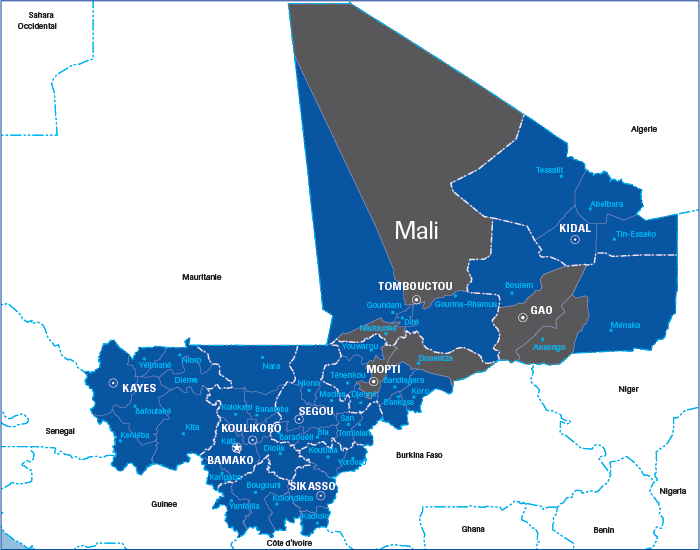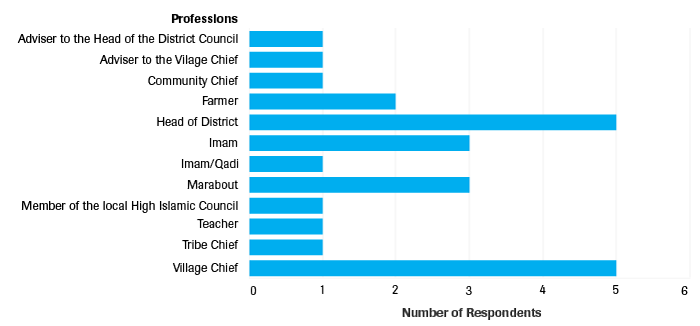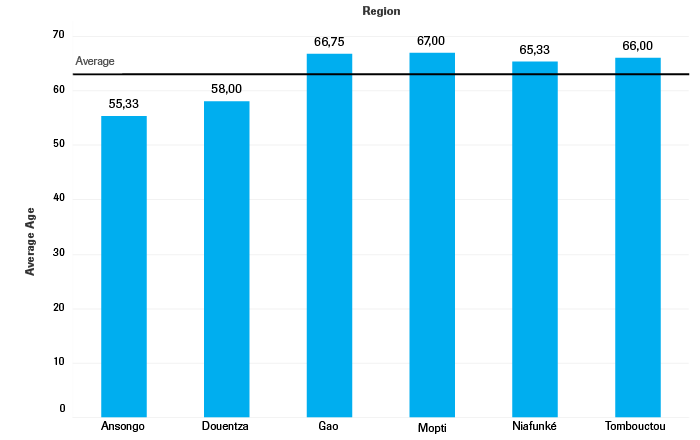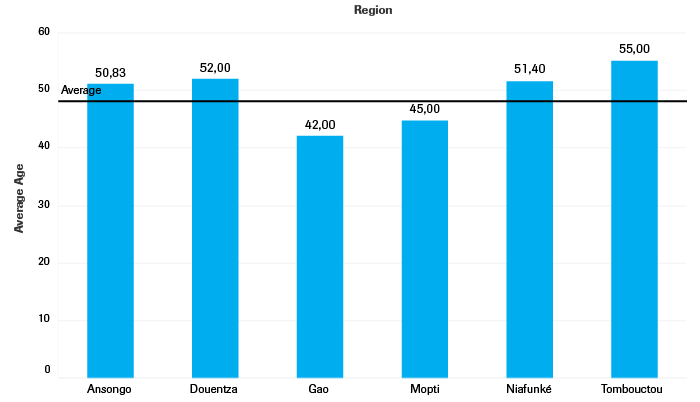During the field research, we collected 108 interviews[3] across four groups: 1) customary justice leaders, such as qadis, imams, village chiefs, marabouts, elders and heads of families; 2) those who have brought a dispute in front of a customary justice system; 3) those who have been called to answer a dispute and 4) a sampling of the general population of each area (see figure 1). We used open-ended questions tailored to each group’s specific role or way of interacting with the customary justice systems.

In total, we interviewed 25 customary justice leaders. We found that in addition to these leadership roles, some also simultaneously held other jobs, such as teaching or farming (see figure 2). Others are retired from other professions but have maintained their customary justice roles.

The average age of the leaders interviewed is 65, the youngest being 36 and the oldest 78 (figure 3a). By way of comparison, the average age of those interviewed who have used a customary justice system is 49 (figure 3b). We do not have enough information for conclusive findings about the age of customary justice leaders, but these observations align with interview remarks that being an older member of the community is one way customary justice leaders gain their status. Other methods include inheritance and election.


